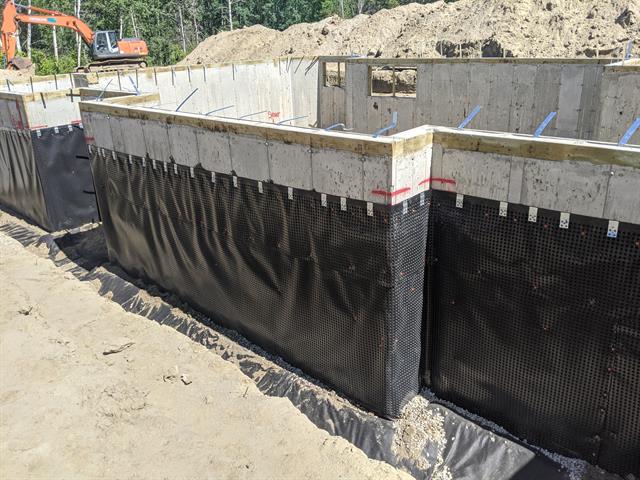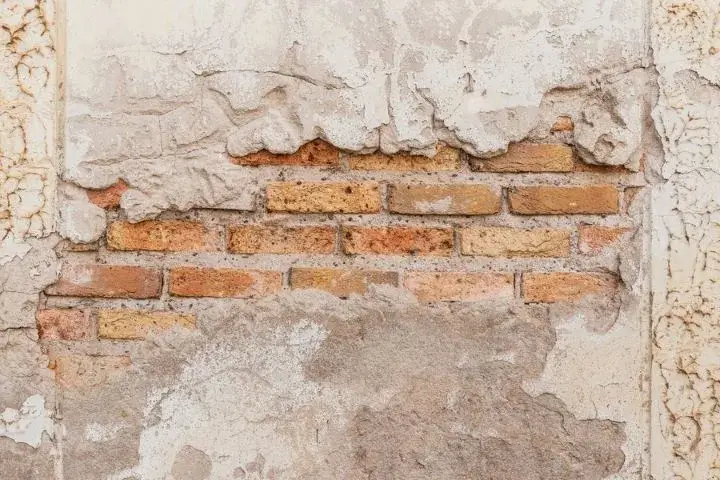Top instruments damp specialist newcastle uses during inspection
Top instruments damp specialist newcastle uses during inspection
Blog Article
Discovering the Numerous Strategies and Solutions for Effective Damp Proofing
Moisture in buildings positions substantial obstacles to both architectural honesty and indoor air quality. Different strategies and services have actually arised to fight this pervasive concern. From typical damp-proof membranes to ingenious chemical therapies, each approach offers special advantages. Comprehending these alternatives is necessary for effective wetness control. However, choosing the appropriate solution depends on certain structure conditions and demands, prompting further expedition into the most reliable wet proofing approaches available.
Recognizing the Sources Of Moisture
Although moisture can emerge from numerous resources, understanding these causes is important for effective remediation. Commonly, moisture stems from three primary resources: increasing wet, passing through wet, and condensation. Climbing moist occurs when groundwater travels up via porous products, such as brick or stone, often as a result of an absence of an efficient obstacle (damp specialist newcastle). Passing through wet is normally triggered by external variables, including roofing leakages, damaged gutters, or harmed walls, enabling water to penetrate a property. Condensation, on the various other hand, results from excess moisture in the air, commonly aggravated by poor air flow and temperature differences, bring about water droplets basing on surfaces. Identifying these underlying issues is necessary, as each sort of wetness calls for a tailored strategy for remediation. Proper assessment helps in figuring out one of the most efficient remedies, eventually guarding the architectural stability of a structure and boosting indoor air high quality
Conventional Damp-Proof Membrane Layers

Chemical Damp-Proofing Solutions
Chemical damp-proofing remedies supply an ingenious approach to avoid wetness intrusion in buildings. These techniques generally include the application of liquid chemicals that permeate stonework and form a barrier versus increasing damp. Typically utilized chemicals consist of silanes, siloxanes, and other water-repellent representatives that react with surface products to produce a hydrophobic layer.The application procedure typically needs exploration holes into the wall surfaces, injecting the chemical remedy, and permitting it to treat. This method is especially advantageous for older structures where conventional damp-proof membranes may be unwise. Moreover, chemical damp-proofing can be much less disruptive and more economical than extensive remodelling projects.While efficient, these remedies depend on appropriate application and ecological problems for peak performance. Normal upkeep and surveillance are crucial to ensure the durability of the damp-proofing therapy. On the whole, chemical damp-proofing stands for a flexible option for guarding buildings against moisture-related damage
Dental Caries Wall Surface Building Techniques
Cavity wall surface building and construction strategies offer countless benefits, especially in moisture control and energy performance. By incorporating an air void between two layers of stonework, these walls efficiently reduce water ingress while improving insulation. This mix not just safeguards structures from moisture but additionally contributes to lowered energy usage.
Benefits of Cavity Wall Surfaces
When thinking about efficient damp proofing techniques, the advantages of cavity walls stick out prominently. Dental caries walls include 2 different layers, developing an air gap that effectively lowers wetness penetration. This layout lessens the threat of wetness, as the external wall functions as an obstacle against rain and water access. Additionally, cavity wall surfaces improve thermal insulation, which adds to power effectiveness by lowering warmth loss. They also supply sound insulation, helping to create a quieter interior environment. In addition, the air void permits air flow, which aids in wetness control and decreases the probability of mold and mildew development. These benefits not only improve the overall convenience of a structure yet also add to its long life and structural honesty.
Dampness Control Techniques
Reliable moisture control methods are essential in dental caries wall surface building to guarantee lasting protection against moisture. One primary approach includes the unification of weep holes, which help with water drainage from the cavity, preventing build-up. Additionally, the use of breathable membrane layers can help handle dampness levels while enabling caught vapor to escape. Appropriate placement of insulation is additionally crucial, as it needs to not block drain paths. Ensuring that the external fallen leaves of the tooth cavity wall are constructed with water-resistant products enhances total toughness. Routine upkeep read more checks are necessary to identify any kind of blockages or damages early, protecting the framework's integrity. Eventually, a mix of these strategies creates a robust protection versus dampness breach in tooth cavity walls.
Insulation and Energy Performance
Insulation plays an essential function in improving power performance within dental caries wall building and construction. By integrating insulating products, these walls develop a thermal barrier that reduces heat loss and reduces power intake. Efficient insulation not only helps keep a secure indoor temperature but likewise reduces the threat of wetness, as it stops condensation within the wall surface dental caries. Different methods, such as making use of stiff foam boards or mineral wool, can be used to accomplish ideal insulation efficiency. Furthermore, proper setup is important to assure that voids and gaps are minimized, which can or else endanger energy efficiency. Ultimately, a well-insulated dental caries wall contributes significantly to overall sustainability and reduces heating & cooling prices for house owners.
Outside Damp Proofing Techniques
Exterior damp proofing techniques are necessary for safeguarding structures from moisture infiltration. 2 reliable strategies include the application of water-proof membrane layers and the installment of French drains pipes. These solutions help alleviate water build-up and protect the integrity of structures.
Waterproof Membrane Layer Application
While numerous methods exist for avoiding moisture access, the application of water-proof membrane layers remains an extremely effective external damp proofing technique. These membranes are generally made from materials such as polyethylene, rubber, or modified bitumen, offering a durable barrier versus water penetration. The installment procedure entails using the membrane to the exterior surface areas of wall surfaces or foundations, ensuring total coverage to stop leakages. Appropriate bond and securing at joints are vital to maximizing efficiency. Water resistant membranes can be used in different forms, including liquid coatings and sheet membrane layers, permitting adaptability based upon the details needs of the structure. This technique not just secures structures from moisture yet additionally enhances their long life and structural stability.
French Drain Installment
One efficient technique for taking care of groundwater and protecting against moisture build-up around a structure's foundation is the installment of a French drain. This water drainage system includes a trench loaded with crushed rock and a perforated pipe that reroutes surface water away from the structure. Correct installment needs cautious preparation, making certain that the drainpipe slopes far from the structure to help with suitable water flow. Additionally, the location of the drainpipe is essential; it needs to be positioned in locations vulnerable to merging or excess dampness. Routine upkeep, consisting of clearing particles from the gravel and guaranteeing the pipe stays unhampered, is essential for long-lasting efficiency. Eventually, a well-installed French drain can greatly lower the threat of water-related concerns in basements and structures.
Inside Waterproofing Methods
Interior waterproofing strategies are vital for protecting a structure's inside from wetness infiltration and possible water damage. These techniques generally entail the application of specific materials and methods created to create a dampness barrier within the structure. One common approach is using water-proof coatings or sealants on walls and floorings, which stop moisture from penetrating surfaces.Additionally, installing indoor drain systems, such as sump pumps, can successfully take care of water build-up in cellars and creep spaces. An additional method includes using vapor obstacles, which are mounted to prevent dampness motion from the ground into living spaces.Moreover, addressing any cracks or gaps in wall surfaces or foundations with suitable sealants ensures a thorough defense versus water intrusion. By carrying out these indoor waterproofing strategies, residential property proprietors can significantly reduce the risk of mold growth, architectural damages, and other moisture-related concerns. Correct execution of these methods is important for long-lasting defense and structure stability.
Routine Maintenance and Inspection Practices
Routine upkeep and assessment practices are important for ensuring the lasting efficiency of wet proofing services in any building. Regular checks enable residential or commercial property proprietors to identify very early signs of moisture breach, such as peeling paint, mold development, and moldy odors. These signs can signal underlying issues that require instant attention.Inspections ought to be performed a minimum of every year, focusing on vulnerable areas like basements, creep areas, and exterior walls. During these assessments, home owners ought to take a look at sealants, drainage systems, and ventilation to validate they operate correctly.Additionally, preserving downspouts and seamless gutters is necessary, as stopped up systems can bring about water build-up near the foundation. Carrying out a regular maintenance routine, along with timely repair services, can considerably prolong the life-span of wet proofing actions and secure the structural integrity of the structure. Aggressive procedures ultimately contribute to the total health and wellness of the living environment.
Often Asked Inquiries
Just How Long Does Damp Proofing Usually Last?
The duration of moist proofing efficiency varies, typically lasting in between 20 to half a century. Aspects such as application high quality, ecological conditions, and upkeep techniques considerably influence the long life of the wet proofing therapy.

Can I Damp Proof My Home Myself?
The individual contemplated the expediency of DIY damp proofing. With correct research and the ideal products, it is feasible. They likewise acknowledged the value of professional assistance to assure durable efficiency and avoid future concerns.
What Are the Indications of Inefficient Damp Proofing?
Signs of inefficient damp proofing include persistent musty odors, visible mold and mildew development, peeling paint, moist patches on wall surfaces, and timber degeneration - mould treatment newcastle. Homeowners must deal with these concerns immediately to avoid more damages and health and wellness concerns
Does Damp Proofing Affect Indoor Air High Quality?

Just How Much Does Expert Damp Proofing Expense?
Specialist wet proofing expenses vary significantly, typically varying from $1,000 to $5,000 relying on the property's size, the extent of the wet concern, and picked techniques. Each circumstance needs a customized evaluation for exact prices. Commonly, moisture originates from 3 main resources: increasing wet, passing through moist, and condensation. When taking into consideration reliable moist proofing approaches, the advantages of cavity walls stand out prominently. External damp proofing methods are important for shielding structures from dampness seepage. While various methods exist for protecting against moisture ingress, the application of waterproof membrane layers continues to be an extremely effective exterior wet proofing technique. Signs of inadequate moist proofing include persistent musty smells, noticeable mold development, peeling paint, wet spots on wall surfaces, and timber degeneration.
Report this page